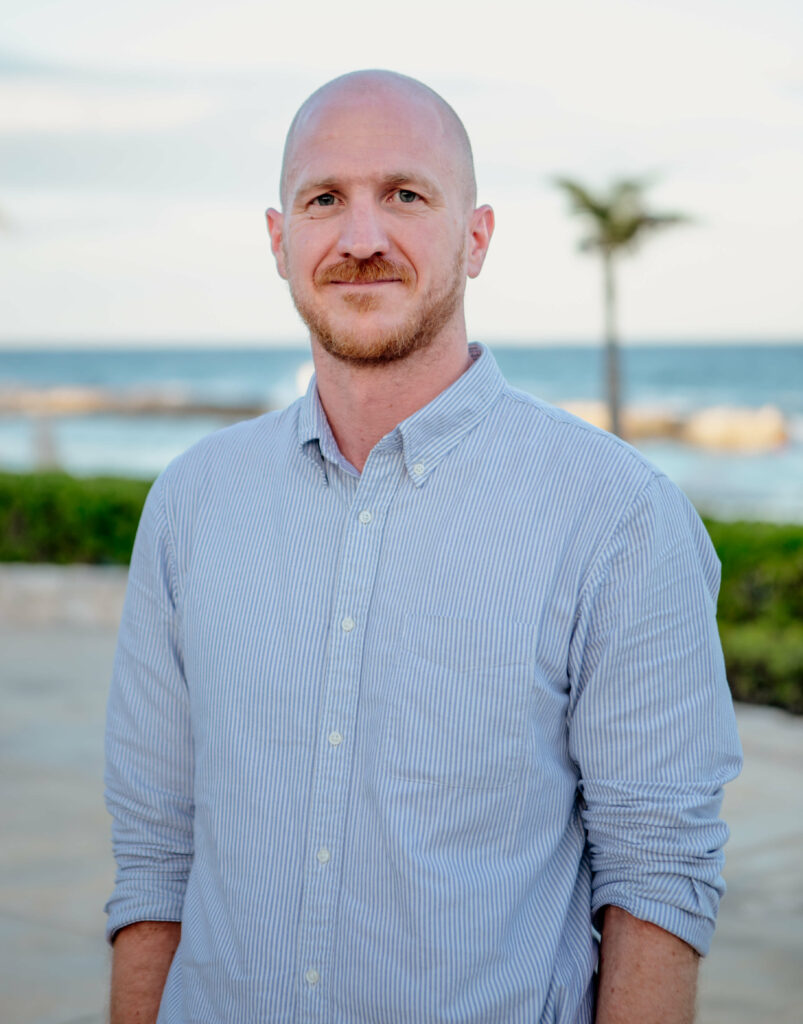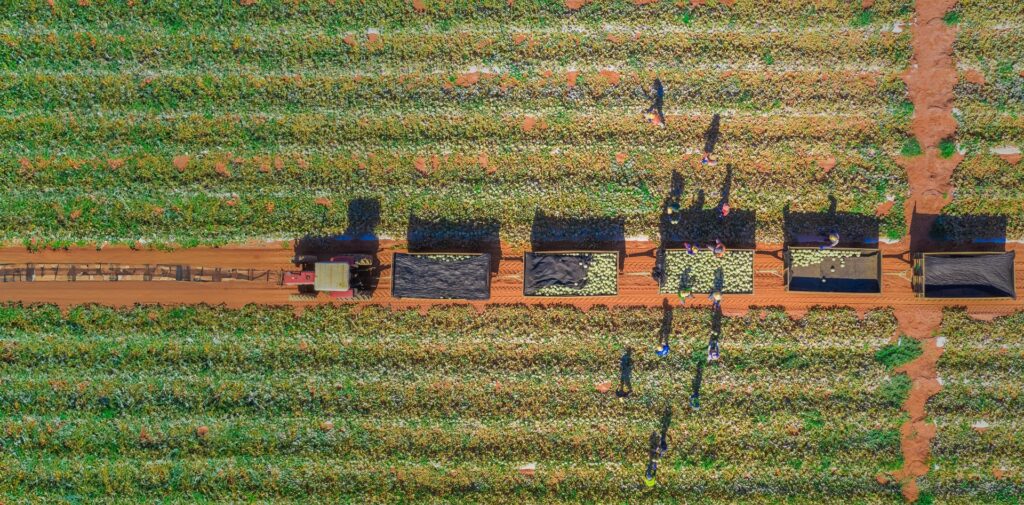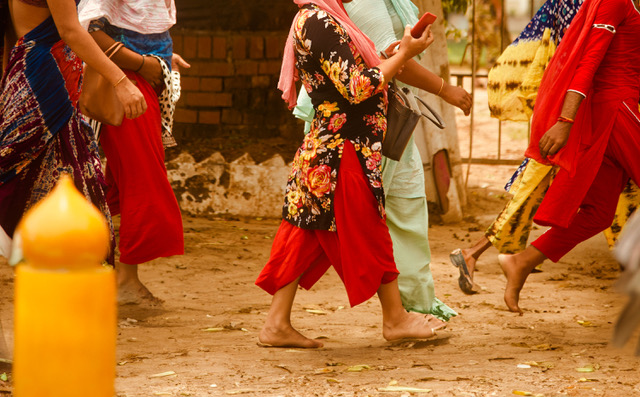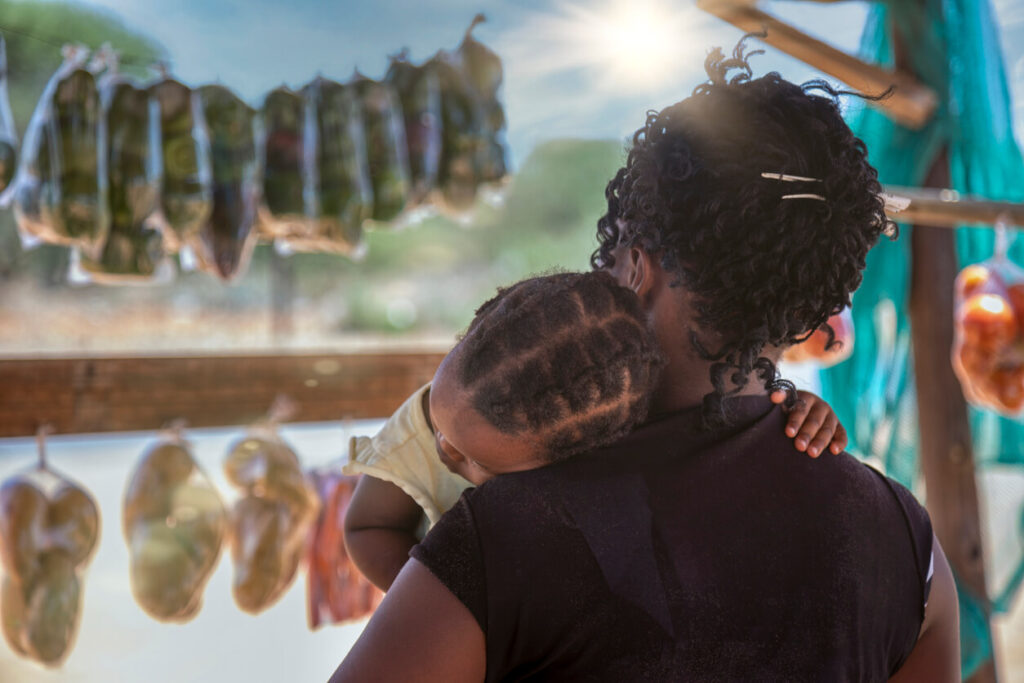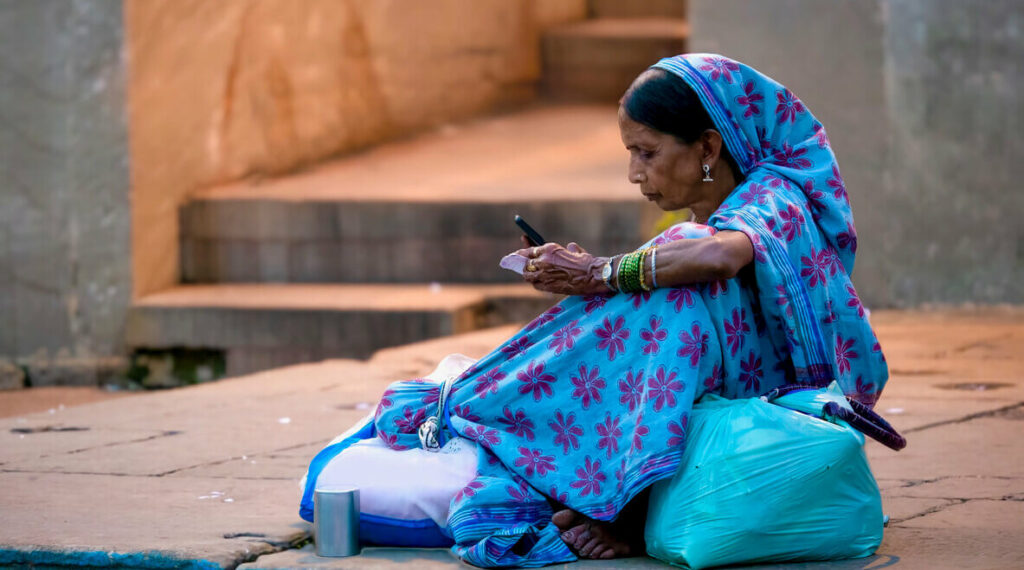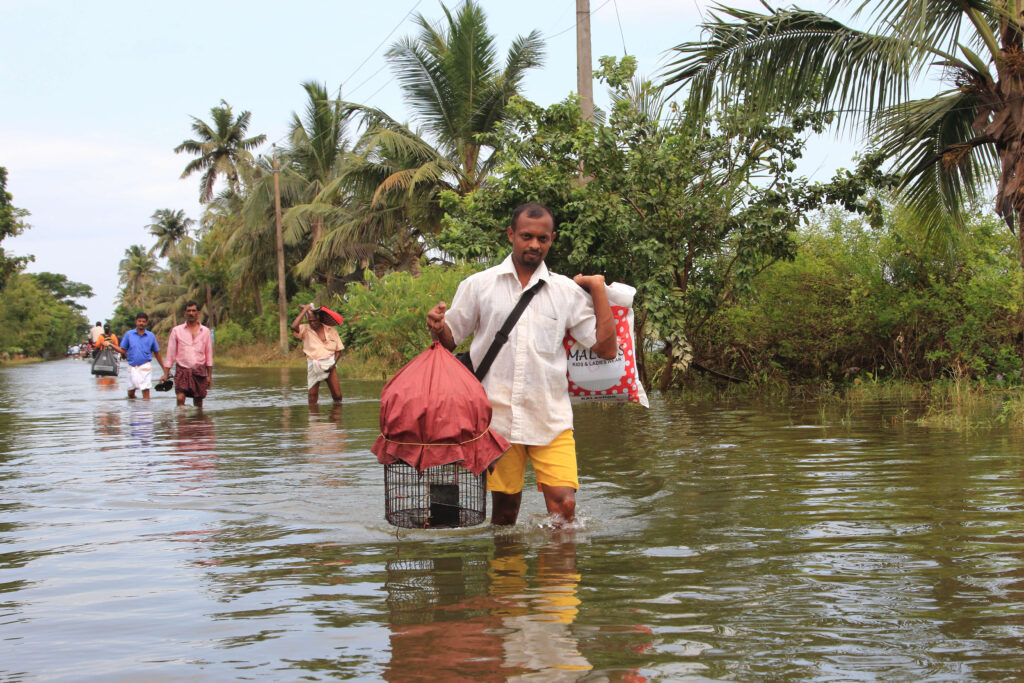
Global development has not just stalled. UNDP’s Human Development Report 2022 showed that the global Human Development Index (HDI), which measures three dimensions of human development (life expectancy, access to education, and standard of living), has been falling since 2020 for the first time since 1991. The increasing frequency and intensity of climate shocks and changing weather patterns are a key driver for this negative HDI trend. We know that the world’s developing countries and lowest-income people face the highest risks and vulnerabilities due to climate change. At CFI, we have developed a framework for Green Inclusive Finance to help understand the role of inclusive finance in building resilience by helping people reduce their vulnerability and increase their ability to respond to climatic shocks and stresses.
“I had nearly Rs100,000 [about $1,176] in cash buried in an earthen jar under the mud floor of my home. There was confusion as we fled and I thought my wife had retrieved it. But we both failed to do so, and now the money has gone.” – Pakistani flood survivor, 2010
Ensuring that vulnerable consumers are protected and treated fairly and with dignity is a crucial but overlooked aspect of resilience. Financial products such as insurance, savings, and payments can play a very important role in building household resilience before, during, and after climate shocks. However, there are challenges with financial products and services related to climate change. Insurance policies can be slow to pay out, and the money often is not accessible when people need it most. Viable models of weather-indexed insurance for low-income and vulnerable communities have also been difficult to develop, and climate change will only make such policies more expensive. Savings held informally risk being destroyed. For instance, during the major floods in Pakistan in 2010, there were reports of hundred-rupee notes carried downstream with the floodwaters; families’ savings lost forever.
Is mobile money any more useful with mobile networks down, absent agents, and nowhere to charge your phone?
There are challenges with savings held in formal accounts as well. We know from the 2021 Global Findex, that the proportion of Pakistanis with any form of financial account increased from 10 percent in 2011 to 21 percent in 2021. In the latest devastating floods to hit the country, more people will have their savings at a financial institution. But with power infrastructure out, ATMs flooded, bank branches shut down, how accessible is that money? Is mobile money any more useful with mobile networks down, absent agents, and nowhere to charge your phone? To help respond, the Pakistan government has established “payment campsites”, where Rs. 25,000 (approximately $112) in cash are distributed to families in affected provinces as part of the Benazir Income Support Program (BISP). But people need more than emergency relief. After floods devastated a region in Australia earlier this year, a group of five local credit unions helicoptered in cash and an ATM to help savers access their money, but with natural disasters occurring three times more often than 50 years ago, and affecting developing countries the most, such solutions may be out of reach for low- and middle-income countries.
Social networks and remittances are valuable tools for resilience and there is plenty of evidence that friends and family are critical sources of emergency funds. CGAP documented how mobile money transfers in Mozambique spiked after the floods in January 2013. However, the covariant nature of climatic risks means that if you are impacted, there’s a good chance that everyone around you is as well. This diminishes the value of social networks that act as a proxy insurance. Evidence from the Philippines found that remittances served as effective insurance to a rainfall shock only for households that had a family member overseas who was not affected by the shock.
There is good evidence that formal financial services can help improve people’s resilience when faced with shocks. However, the issue of consumer protection in light of weather events is less researched.
Consumer protection risks arise due to vulnerabilities caused by:
- The inability to access financial services in a climate emergency
- The inability to negotiate fair terms for products and services
Each of these factors is also interrelated and can exacerbate consumer stress.
Consumer Protection Risks Arising from the Inability to Access Financial Services
“Hurricane Jeanne took all that I had…my job and my home are gone. I used to have food: Now I beg in the market.” – Consumer in Haiti, 2005
This quote from an individual in Haiti in 2005 is eerily similar to stories from Pakistan in the aftermath of the July 2022 floods. Even when it is possible to access formal financial services, disruptions can take place due to failure in infrastructure or lack of physical access to banks, agents, and ATMs, which in turn impacts liquidity of these channels as well as the ability to serve consumers. The inability to access up-to-date information, and the absence of channels that could provide this information, paves the path for exploitation.
In our interviews with stakeholders from Pakistan, anecdotes emerged about middlemen who charged a higher fee to enable access to government-to-person (G2P) payments. Government response to deliver emergency relief through G2P payments can be disrupted unless telecom operators and financial service providers have business continuity plans to deal with climate shocks. And, as with most emergencies, targeting can be an issue. Experiences from the Philippines in the aftermath of Typhoon Haiyan show that standardized indicators may not reflect the nuances of debt and vulnerabilities. For instance, a community member in the Philippines was excluded from benefits since she had used credit to buy fish cages before the Typhoon struck. However, the typhoon had destroyed her boat, leaving her to deal with income loss and the need to service debt, and she was excluded from relief funding. Finally, women tend to be disproportionately impacted due to information gaps. Evidence from India during the COVID-19 pandemic showed that women are impacted more by information gaps. This can be even worse during a climate-induced disaster.
Some solutions have emerged to mitigate the information gap challenge. In floods that impacted both Chennai and Kerala, social media has emerged as a crucial tool for coordination between citizens and civil society organizations to inform affected people about which ATMs have cash and other critical information. However, ensuring that this information is accessed by low-income households, and women within these households can still be a challenge. The National Payments Corporation of India (NPCI) is testing solutions that allow Unified Payments Interface (UPI)-based digital payments without active internet connections. This can allow G2P payments even when infrastructure is disrupted in the immediate aftermath of a climate shock.
Consumer Protection Risks Arising from the Inability to Negotiate Fair Terms
“During those days (with the Brahmaputra floods), my husband goes to Dhaka to work as a rickshaw puller and we struggle. To start cultivating again after the floods we would borrow from a mohajon (local money lender).” – BRAC customer
It is common to see a rise in informal borrowing at high interest rates as a response to cope with climate disasters. Desperate times and the lack of formal channels make it hard for people to negotiate fair terms, which often leads to overindebtedness. Recent reports from the flood hit province of Sindh in Pakistan speak of informal loan agreements in exchange for work, resulting in debt bondage.
Those with access to formal loans can also be impacted adversely. For instance, a study in Mexico found that exposure to extreme temperatures even for a day can increase delinquency rates of small business borrowers by 0.012 percentage points.
Desperate times and the lack of formal channels make it hard for people to negotiate fair terms, which often leads to overindebtedness.
Agent fraud or charging excessive fees are common complaints when consumers are desperate for access to relief. In Pakistan, we heard anecdotes of agents charging between $4 – $12 for cash withdrawal, a steep premium over the usual fees of $0.10. With increasing digital financial services, there are also reports of cyber frauds in Pakistan. The lack of complaint mechanisms makes grievance redressal difficult. Credit reporting mechanisms and the absence of policies that allow formal financial institutions to restructure these loans can result in further exclusion of consumers. Our research revealed that people who are unable to repay their loans in the aftermath of floods and other climate shocks in Nepal get blacklisted.
Providing emergency loans to people in areas that are prone to climate risks can help address the challenge of overindebtedness and informal borrowing at high interest rates. BRAC piloted an emergency loan product in partnership with the University of California, Berkeley and found a much lower incidence of missed payments among those who took the emergency loan. BRAC also observed a 5 percent increase in savings deposits among the emergency loan borrowers, compared to just 1 percent for non-borrowers. In southern Nepal, a region prone to floods, the World Food Programme (WFP) distributes cash support in anticipation of floods. Forecast-based financing (FbF) uses early warning forecasts to catalyze early actions and humanitarian funding ahead of an extreme weather event. Funds are distributed in the short window between the forecast trigger and the disaster and must give sufficient time to people to use the funds for evacuation, fortifying their houses, purchasing necessary materials, and other mitigation measures.
Call to Action
Policy responses are emerging to help financial institutions and consumers deal with emergency crisis situations. In the United States, the President can declare supervisory guidance during a disaster or emergency, which includes climate disasters. Some of these responses include waiving ATM fees, increasing ATM withdrawal limits, waiving penalties on early withdrawal of time deposits, expanding the availability of short-term unsecured credit, and offering payment accommodations. However, these measures, while useful, must be systematically embedded into the business continuity plans of financial institutions to ensure low-income consumers do not bear these event costs.
The intersection of consumer protection and climate is a relatively new area of research and brings together two of CFI’s key research themes. Consumer protection risks in the context of climate change presents a wicked problem and cannot be addressed without the effort and collaboration of multiple stakeholder groups. Our hope is that by exploring this intersection, and how low-income and vulnerable people can be effectively protected in the context of climatic risks, we can contribute towards a new perspective on responsible finance – one that looks ahead to emerging challenges with the needs of customers at its core.
Special thanks to colleagues from Karandaaz, Pakistan, Dvara KGFS India, and Nabil Bank, Nepal for their support with this blog post.
